Exploring the Dynamics of Fantastic Four 2
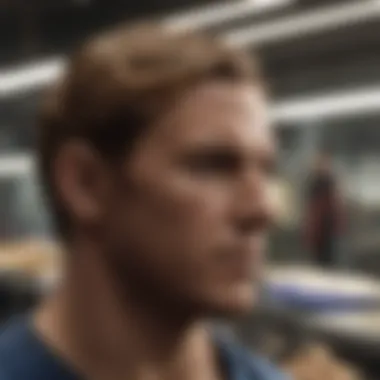
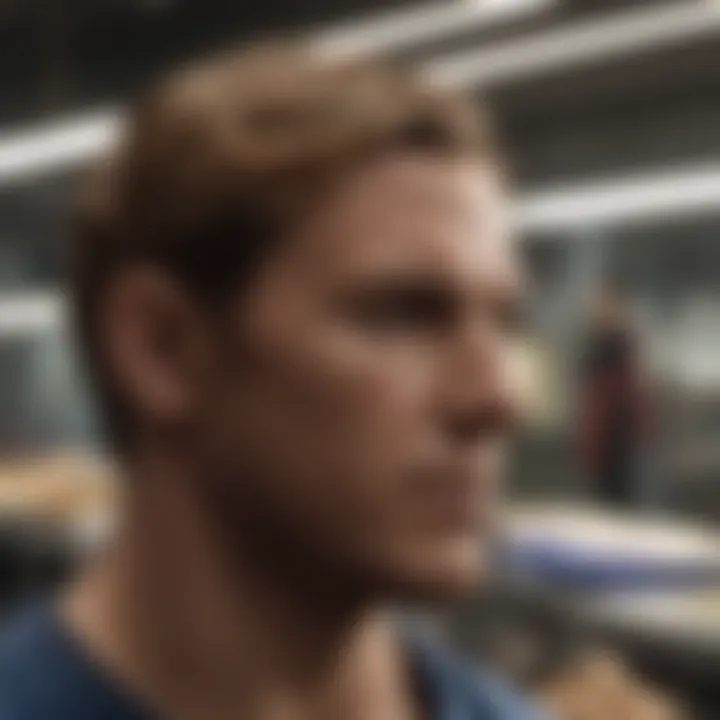
Intro
This article delves into the multiple layers of Fantastic Four 2, a film that stands at the intersection of comic book lore and cinematic evolution. Understanding this movie requires an examination of various elements that contribute to its complexity, from production histories to cultural implications. As a sequel, it bears the weight of expectations and has its own legacy to consider. By analyzing narrative structures, character arcs, and visual execution, this article will reveal the film's broader significance within the superhero genre.
Overview of Fantastic Four
Fantastic Four 2 is a sequel that builds upon the foundation set by its predecessor. The film was released in 2007, continuing the story of Marvel’s beloved superhero team. It introduces new challenges and villains while delving deeper into the characters' relationships and moral dilemmas. The filmmakers aimed to appeal to both comic enthusiasts and new audiences, crafting a narrative that is at once engaging and loaded with deeper meaning. This context is essential for understanding the narrative intricacies that follow.
Plot/Storyline Analysis
The plot of Fantastic Four 2 revolves around the rise of Galactus, a formidable adversary who threatens Earth. The story intricately weaves the personal struggles of the team members with the escalating stakes of their battle against this cosmic entity. Key themes include sacrifice, loyalty, and identity, which define each character’s journey. The narrative progresses through various action sequences and emotional beats that keep the audience invested without divulging too much.
Character Development
Character arcs are central to the film’s narrative flow. Each member of the Fantastic Four is presented with unique growth challenges. Reed Richards, also known as Mr. Fantastic, grapples with the weight of leadership and responsibility. Sue Storm, or Invisible Woman, confronts her own agency and power dynamics in relationships. Meanwhile, Johnny Storm, the Human Torch, showcases typical youthful bravado while facing maturity. Lastly, Ben Grimm, or The Thing, wrestles with identity issues posed by his transformation. The development of these characters shapes the overall experience and makes their ultimate triumphs or failures resonate deeply with viewers.
Visuals and Effects
Visually, Fantastic Four 2 delivers a mix of innovative special effects that aim to portray the powers of its characters authentically. The use of CGI is integral in depicting Galactus and his cosmic threats, creating visually arresting scenes that capture the audience's attention. The cinematography reflects the film's tone, balancing light-hearted moments with darker, more serious themes. This careful attention to visual storytelling enhances the cinematic experience, allowing for a richer comprehension of the narrative.
"A superhero film's ability to blend character development with visual artistry defines its success."
Prelims to Fantastic Four
The significance of Fantastic Four 2 lies in its pivotal role within the broader narrative of superhero films. This installment is not merely another sequel; it encapsulates the evolution of a franchise that has influenced both comic book adaptations and popular culture as a whole. Understanding the dynamics involved in this film allows us to appreciate its artistic merit, cultural impact, and its reception among diverse audiences.
Through careful evaluation of its production, storytelling techniques, and character development, we can uncover how Fantastic Four 2 shapes the genre's landscape. The interplay between audience expectations and the creative decisions made during the film’s production offers a rich area for analysis. Moreover, as superhero films continue to thrive in contemporary cinema, reflecting on the Fantastic Four franchise provides insight into how legacy and innovation intersect in this crowded field.
Overview of the Franchise
The Fantastic Four franchise has a storied history that stretches back to its comic book origins in 1961, created by writer Stan Lee and artist Jack Kirby. The original comics introduced the four iconic characters: Reed Richards, Sue Storm, Johnny Storm, and Ben Grimm. Each character possesses unique abilities resulting from a cosmic accident, which not only serves as a catalyst for their superhero identities but also underscores themes of teamwork and sacrifice that run deep through the series.
This franchise has seen varied adaptations, from its early animated series to the feature films, with varying degrees of success. The first live-action movie, released in 2005, attempted to breathe new life into the characters but faced mixed reviews. With Fantastic Four 2, producers aimed to refine the narrative and character arcs, harnessing lessons learned from previous films. Analyzing this franchise is crucial for understanding its attempts to navigate the complexities of modern filmmaking while staying true to its roots.
The Evolution of Superhero Films
The evolution of superhero films is closely tied to technological advancements and shifting cultural attitudes. From the campy portrayals of the 1960s to the darker, nuanced narratives seen in recent years, the superhero genre has undergone significant transformation. Fantastic Four 2 forms a notable part of this evolution, as it seeks to balance the lightheartedness characteristic of the original comics with modern expectations for depth and complexity.
Several factors contributed to this evolution:
- Technological Innovation: Advances in CGI and special effects have allowed filmmakers to visualize superpowers more realistically, influencing audience expectations.
- Thematic Depth: Modern superhero films increasingly explore societal issues. The characters in Fantastic Four 2 are no longer just heroes; they face moral dilemmas, personal struggles, and cultural commentary.
- Expanded Universes: As superhero franchises aim for interconnected storytelling, understanding how Fantastic Four 2 fits into the larger cinematic landscape becomes imperative.
The progression of superhero films reflects broader societal changes, making Fantastic Four 2 not just a sequel, but a mirror of its time.
Understanding these dynamics is essential for grasping how Fantastic Four 2 may contribute to the legacy of the superhero genre, influencing future projects and audience engagement.
Production Insights
Understanding the production insights behind Fantastic Four 2 illuminates the complexities involved in bringing the film to fruition. This section serves as a foundational pillar of the article. It highlights how the development phase, key personnel, and production choices shape the final output. Knowledge of these production dynamics is vital, as they directly impact the narrative, visual style, and overall cultural resonance of the film. Analyzing the production journey allows audiences to appreciate the intricate, often challenging processes that filmmakers navigate.
Development Timeline
The development timeline of Fantastic Four 2 is crucial for contextualizing its inception and execution. The film’s journey can be traced back to its conceptual origins, which often start many years before actual filming begins.
Initial discussions around the film emerged shortly after the previous installments of the franchise. By assessing announcements of development phases, screenplay changes, and directorial choices, we gain insights into how industry trends and audience expectations influenced the film's trajectory. This happened through a series of iterative processes, refining the story and adapting character arcs.
For instance, filmmakers faced numerous challenges such as casting selections and scheduling conflicts. Each decision made during the timeline shaped the film's structural integrity. The changes reflect an effort to adapt to evolving cinematic landscapes and audience tastes.
Key Players in the Production Team
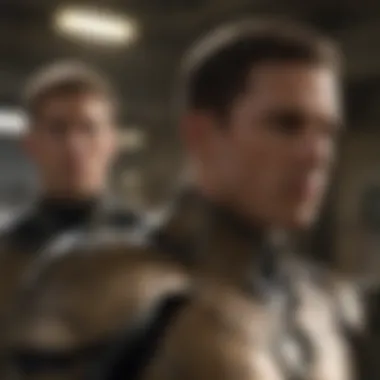
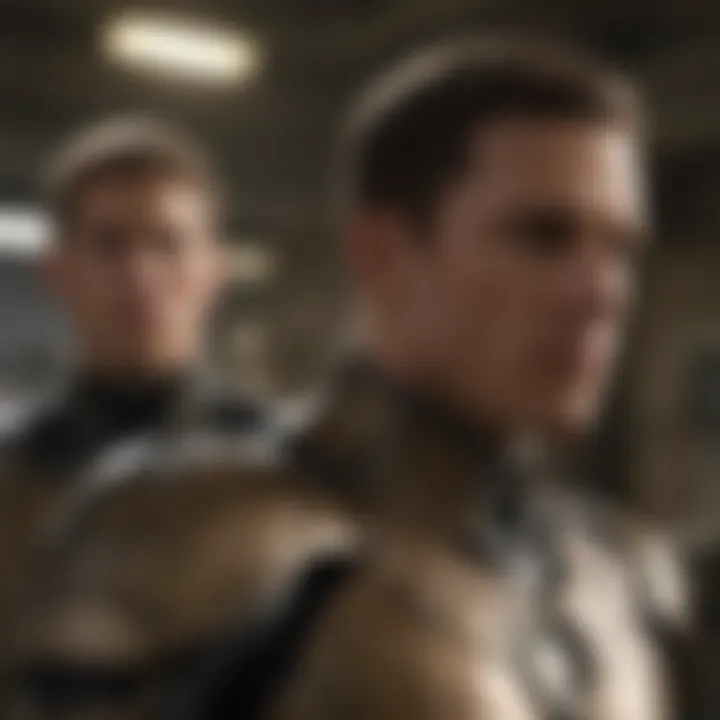
Key players in the production team account for the film's creative direction and execution. In any major film production, these individuals offer their unique skills, shaping the project through their artistry and expertise.
Critical roles in Fantastic Four 2 included the director, producers, and screenwriters. The director not only oversees the actual shooting but also works closely with the actors to bring the screenplay to life. Producers manage the budget, schedule, and numerous logistical considerations, ensuring that the film is executed smoothly.
The screenwriters' ability to create engaging dialogue and compelling plots is indispensable. Their understanding of character motivations, along with themes that resonate with audiences, can drive the emotional core of the film.
Moreover, the inclusion of renowned talent, such as those whose work enriched the film’s legitimization in cinematic circles, should be noted. Collaborators from previous successful superhero projects inform production styles, providing inherited techniques that set the film apart.
Narrative Structure
In any cinematic creation, the narrative structure serves as the backbone that supports the film’s story. In the context of Fantastic Four 2, understanding its narrative structure is crucial for dissecting how the plot unfolds and how character arcs develop. A well-defined narrative structure not only aids in engaging the audience, but also enhances the thematic exploration within the film. Analyzing this structure illuminates how the film balances character development and action, and how it addresses complex themes prevalent in superhero stories.
The structure typically follows a three-act format, which helps to create a rhythm and clarity in storytelling. It ensures that the viewer can follow the storyline without confusion. Each act serves a specific purpose:
- Setup - Introduces characters and their motivations. The stakes are established here.
- Confrontation - This is where conflicts arise, and character dynamics become more intense, leading to various turning points.
- Resolution - Provides closure and addresses how the characters evolve through their challenges.
Improvements or shifts in narrative structure can significantly impact how the audience perceives the characters and the overall message of the film. When these elements are crafted thoughtfully, they resonate with viewers on an emotional level.
Plot Summary
The plot of Fantastic Four 2 continues the adventures of the titular characters as they face a formidable adversary. The story picks up from the previous installment, where the team has started to balance their personal lives with their responsibilities as superheroes. The film sees a new villain emerge, presenting not only physical challenges but also testing their unity and resolve as a team.
The interactions between the characters are marked by conflict and growth. The tension builds as individual motivations come to light, revealing insecurities and ambitions that drive each character's actions. Each member of the Fantastic Four must confront their personal struggles while also coming together to battle a common threat. This balance of personal and collective stakes is a cornerstone of the narrative, giving viewers a compelling reason to invest in the heroes' journey.
Themes and Motifs
Fantastic Four 2 engages with several significant themes that are common in superhero narratives but are expressed through unique lenses. Key themes include:
- Family and Teamwork: The notion of family, whether chosen or biological, surfaces prominently. The dynamics within the Fantastic Four stretch beyond just teamwork; they explore loyalty, betrayal, and reconciliation.
- Identity: Characters grapple with their identities, both as individuals and as members of the superhero team. Their powers often symbolize a part of themselves, leading them to question who they truly are beneath their extraordinary abilities.
- Responsibility: As with many superhero tales, the theme of responsibility is central. Each character faces decisions that test their moral compass and sense of duty.
Motifs such as the use of technology and the presence of alternate dimensions serve as a narrative device to emphasize the characters' internal struggles. These motifs enhance the film’s discussions on the consequences of scientific advancements and the ethical dilemmas they present.
Through these themes and motifs, Fantastic Four 2 succeeds in delivering a story that is both entertaining and thought-provoking. The narrative structure effectively weaves together character arcs and thematic depth, establishing a rich text for analysis.
Character Analysis
Character analysis is an essential aspect of understanding any film, especially in superhero narratives like Fantastic Four 2. The characters in such films play a crucial role in engaging the audience, shaping the plot, and embodying the themes presented. In the context of Fantastic Four 2, each character is more than just a superhero with powers; they are representations of human emotions, conflicts and qualities that resonate with viewers. Analyzing these characters provides insight into their motivations, behaviors, and how they interact with each other and the world around them.
By dissecting the characters, we also explore the thematic depth of the film. For instance, themes such as family, sacrifice and identity are prominent in the narrative. Additionally, the characters' growth throughout the film reflects their struggles and triumphs, which can often mirror real-life challenges faced by the audience.
Profiles of Main Characters
The main characters of Fantastic Four 2 include Reed Richards, Sue Storm, Johnny Storm, Ben Grimm, and Victor Von Doom. Each character brings a unique dynamic to the story, enriching both the plot and viewers' understanding of their roles.
- Reed Richards: Also known as Mr. Fantastic, Reed is the leader of the Fantastic Four. He is characterized by his intelligence and resourcefulness, often driven by a desire to protect his family and friends. His scientific pursuits often put him at odds with the responsibilities of leadership.
- Sue Storm: The Invisible Woman showcases strength and vulnerability. Her ability to become invisible serves as a metaphor for her struggle to assert herself, both as a superhero and as a woman in a male-dominated field.
- Johnny Storm: The Human Torch is impulsive and fiery, reflecting youth and recklessness. However, his character development reveals a deeper layer of maturity and responsibility, particularly in challenging times.
- Ben Grimm: Known as The Thing, Ben represents the theme of acceptance in the face of adversity. His rocky exterior serves as a physical manifestation of the struggles he faces regarding his identity and appearance.
- Victor Von Doom: As the antagonist, Doctor Doom embodies ambition and vengeance. His complex origin story provides a deeper narrative that speaks to the consequences of power and ambition.
Character Development Arcs
Character development in Fantastic Four 2 is intricately woven into the film's narrative structure. Each character undergoes a transformation that echoes their personal struggles and growth throughout the story.
- Reed Richards evolves from a brilliant scientist to a responsible leader, balancing his scientific ambitions with the needs of his family. This change often creates tension, especially when his decisions put them at risk.
- Sue Storm learns to embrace her powers and assert her identity, breaking free from previous limitations imposed by herself and others. Her evolution signifies the importance of self-acceptance and confidence.
- Johnny Storm matures significantly throughout the film. Initially portrayed as reckless, he transforms into a more responsible hero, learning the value of teamwork and sacrifice.
- Ben Grimm faces significant internal conflict regarding his appearance and identity. His journey reflects themes of acceptance and devotion, showing that true worth is not tied to physical form.
- Victor Von Doom's arc reveals the duality of ambition and downfall. His character serves as a cautionary tale about the perils of unchecked ambition, leading him to become the film's main antagonist.
These character arcs are not just crucial for plot progression, but they also deepen the emotional resonance of the film, making it a richer experience for viewers. Their developments reflect broader themes relevant to the audience, transforming Fantastic Four 2 into a story that is about more than just superheroes.
Understanding character analysis allows fans to appreciate the complexities within superhero films, highlighting the human experiences behind the superhuman abilities.
Whether one is a dedicated comic book reader or a casual viewer, character-driven narratives invite everyone to connect on a more emotional level. They compel viewers to reflect on their own lives, struggles and aspirations.
Visual Aesthetics and Cinematography
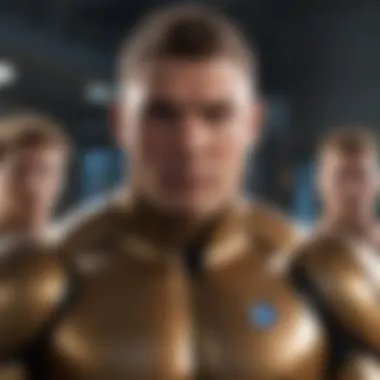
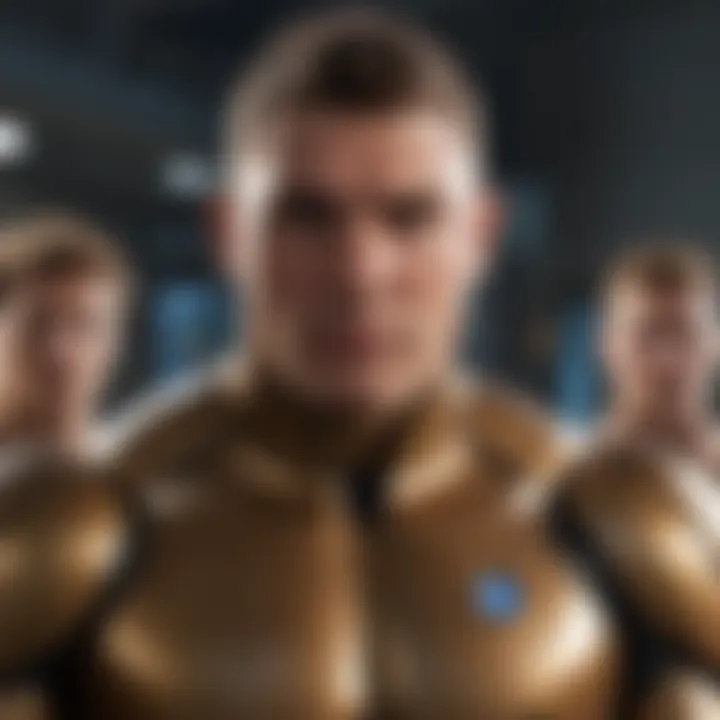
Visual aesthetics and cinematography play a critical role in any cinematic experience. In the context of Fantastic Four 2, these elements elevate the narrative, influencing how audiences perceive the story and characters. The visual representation not only defines the atmosphere but also conveys emotional depth. Effective visuals can transform even a simple scene into something profound, resonating with viewers on multiple levels.
The integration of art direction, set design, and advanced technology is fundamental in creating an engaging filmic world. These aspects work together to craft unique environments that reflect the tone and themes of the film. A visually compelling film sets the stage for character actions and dynamics, making the audience feel more immersed in the storyline.
Art Direction and Set Design
Art direction is pivotal in establishing the visual language of Fantastic Four 2. The choices made during production regarding location, color palettes, and overall aesthetic coherence significantly impact audience engagement. A strong emphasis on set design helps ground the story, making it relatable. Each set plays its part in enhancing the character arcs and thematic depth.
For example, the depiction of the Baxter Building serves not just as a backdrop but as an extension of the characters’ identities and aspirations. The sleek designs and futuristic elements symbolize innovation and ambition, paralleling the evolution of the Fantastic Four team itself.
Moreover, constructing authentic sets allows for a more detailed exploration of the characters' world, inviting viewers to linger in the spaces where pivotal moments unfold. The ability to physically interact with these sets during filming often lends an additional layer of authenticity.
Special Effects and Technology
The integration of special effects and technology further enriches the visual storytelling. High-caliber effects can encapsulate the superpowers of the characters, offering a thrilling experience that captures the audience's attention. In Fantastic Four 2, the use of CGI and practical effects must balance seamlessly. This requires thoughtful execution to keep the visuals believable while still highlighting the grandeur of the superhero genre.
Innovations like motion capture and augmented realities can enhance how characters display their powers, creating visually stunning sequences. For instance, the transformation sequences of the characters should be carefully crafted to resonate with the audience, hinting at the struggles tied to their powers while still delivering the superhero flair.
"Visuals can sometimes speak where words fail. In Fantastic Four 2, this truism is particularly relevant as each visual component serves a purpose beyond mere aesthetic appeal."
In summary, the intricacies of art direction, set design, and the application of cutting-edge special effects are not merely enhancements to Fantastic Four 2. Instead, they are crucial components that significantly shape the narrative and emotional resonance of the film. Without this emphasis on visual aesthetics and cinematography, the film would lack the depth and engagement that fans seek.
Marketing and Distribution
In the realm of cinema, the marketing and distribution phase plays a crucial role in determining the success of a film. This is especially pertinent for a franchise like Fantastic Four 2, which exists within a competitive landscape of superhero films. Effective marketing strategies not only create anticipation but also shape the audience's perception of the film before its release. Understanding how these elements work can provide insights into the film's overall reception.
Promotional Strategies
Promotional strategies encompass various activities designed to generate buzz about a film and engage potential viewers. For Fantastic Four 2, these strategies might include:
- Trailers and Teasers: Well-crafted trailers can capture the essence of the film while building excitement. They serve as a first glimpse into characters and storylines, potentially attracting a larger audience.
- Social Media Campaigns: Utilizing platforms like Facebook and Reddit, the franchise can directly engage with fans. Through posts, behind-the-scenes content, and interactive campaigns, they can deepen viewer interest and create a community around the film.
- Merchandising: Strategic product placements and merchandise can enhance visibility. Products featuring characters from Fantastic Four 2 could appeal to collectors and enthusiasts, further promoting the film in popular culture.
- Event Appearances: Cast appearances at conventions or film festivals can create additional excitement. Engaging with fans in person helps build a loyal following and creates memorable experiences that resonate with audiences.
The goal is to create a multifaceted promotional strategy that targets diverse audience segments.
Box Office Performance
Box office performance serves as a tangible measure of a film's success. For Fantastic Four 2, several factors will impact its performance:
- Opening Weekend Estimates: Predicting the gross for the opening weekend can indicate overall audience interest. A strong performance here often leads to more sustained interest.
- Critical Reception: The critical reviews received before and after the release can influence audience turnout. Positive reviews can lead to higher box office numbers, while negative feedback can deter potential viewers.
- Competition with Other Releases: The timing of the release is essential. Releasing Fantastic Four 2 during a crowded period with strong competitors may impact its overall earnings.
- Word of Mouth: Viewer recommendations post-release can significantly shape box office trajectory. Good word of mouth often leads to extended runs in theaters.
“Box office figures, while informative, are just one aspect of measuring a film's impact.”
In summary, marketing and distribution strategies are vital to the success of Fantastic Four 2. They not only drive initial audience turnout but also influence how the film is viewed within the larger cinematic landscape. The seamless integration of promotional strategies and the resulting box office performance determine not just immediate financial returns, but also the franchise's longevity and cultural impact.
Critical Reception
The examination of Critical Reception is key in understanding the impact of Fantastic Four 2 within both the film industry and its audience. Critical reception encapsulates the response from film critics, which often guides public perception, and the broader audience's reactions, showcasing the film's strengths and weaknesses. Analyzing this aspect provides insights into the film's effectiveness in conveying its narrative, character dynamics, and overall production quality. Moreover, understanding critical reception helps to contextualize the film within the superhero genre and enriches discussions about its lasting influences.
Critical Reviews and Ratings
Critical reviews and ratings play a significant role in shaping the discourse surrounding Fantastic Four 2. Industry professionals often assess various elements such as direction, writing, acting, and visuals. The reviews provide a lens for audiences to evaluate the film’s merits before viewing it.
- Favorable reviews typically highlight strong characterizations, compelling narratives, or innovative visual effects. Conversely, negative reviews may point out narrative inconsistencies or shortcomings in character development.
In terms of the rating system, aggregators like Rotten Tomatoes and Metacritic play a crucial role. These platforms compile scores based on diverse reviews, offering a composite picture of the film's reception. For Fantastic Four 2, understanding these ratings can reveal:
- How critics view the film in the context of the Fantastic Four franchise.
- Comparisons to other superhero films released around the same time.
- The film’s technical execution and its storytelling efforts.
"Critical reviews can serve as a catalyst for discussions, allowing audiences to revisit the film in new ways or reconsider its impact on their perceptions of the superhero genre."
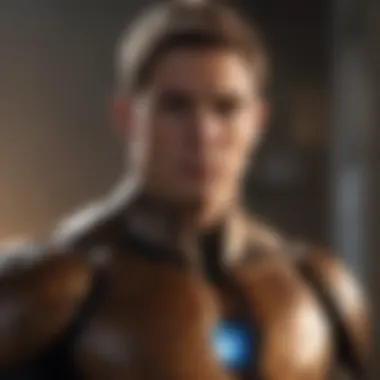
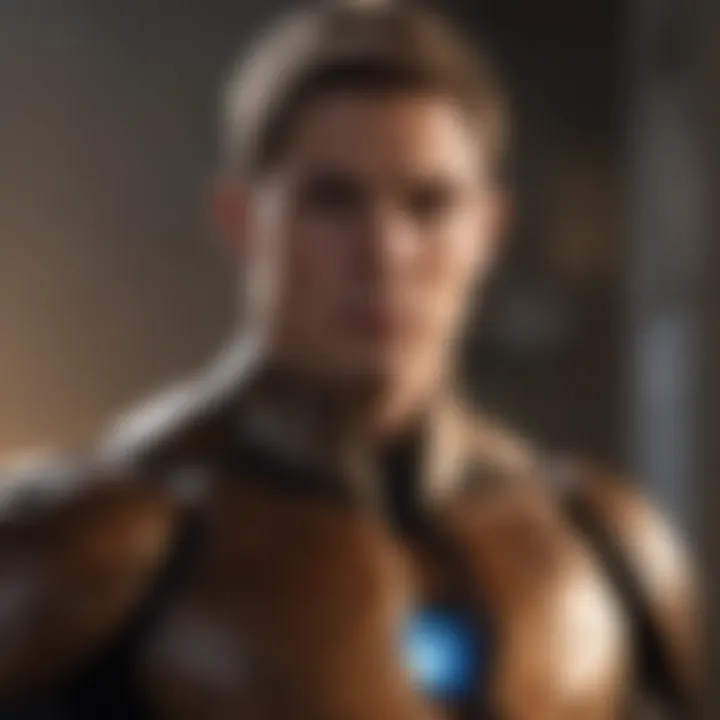
Audience Reception Analysis
Analyzing audience reception, on the other hand, focuses on everyday viewers and their experiences with Fantastic Four 2. This reception is indicative of how effectively the film resonated with its intended audience. Audience feedback often comes through various channels including social media, surveys, and platforms such as Reddit and Facebook.
Key components of audience reception analysis include:
- Viewer engagement: How invested viewers felt in the characters and storyline.
- Emotional response: The emotional journey that the audience experienced during the film.
- Cultural references: How well the film connected themes relevant to its audience’s contemporary social context.
Factors such as box office performance often reflect audience reception. For instance, high ticket sales may indicate positive word-of-mouth and strong viewer interest. Conversely, low attendance may suggest a disconnect between the film’s offering and audience expectations.
By studying audience reviews and discussions, a comprehensive picture of Fantastic Four 2 emerges, showing not only what critics thought but also how ordinary viewers received and engaged with the film.
Cultural Impact of Fantastic Four
The cultural impact of Fantastic Four 2 is significant and multifaceted. The film is a notable entry in a franchise that has evolved alongside the superhero genre. This evolution reflects broader societal themes and shifts in audience expectations. Analyzing its influence illustrates how this film has contributed to shaping cultural perceptions of superheroes.
Influence on Popular Culture
Fantastic Four 2 resonates deeply within popular culture. The film not only entertains but also serves as a reflection of contemporary issues. The characters, often seen as archetypes, engage with themes like family dynamics, sacrifice, and identity. These themes have widespread appeal and encourage connection with diverse audiences.
Moreover, the film's unique take on superhero narratives has inspired various forms of media. This includes merchandise, fan art, and discussions on platforms like Reddit and social media. These elements showcase the film's reach; it transcends mere entertainment, becoming part of cultural dialogues.
"Superheroes are no longer just fantasy figures. They symbolize our hopes, fears, and social realities."
Representation of Superheroes in Film
The representation of superheroes in Fantastic Four 2 is crucial in understanding its cultural significance. The characters are not only powerful but also relatable. Their struggles mirror those of ordinary people, making them accessible. This representation contributes to a more profound engagement with the superhero genre.
In recent years, diversity and representation have become central topics in media. Fantastic Four 2 includes characters from various backgrounds and features strong female figures which underscore the evolving narrative of superhero films. This shift indicates a growing recognition of the diversity within the audience. As a result, films like Fantastic Four 2 pave the way for more inclusive storytelling, demonstrating that heroes come in many forms.
In summary, the cultural impact of Fantastic Four 2 extends beyond entertainment, influencing broader conversations about identity and representation in the superhero genre. Its blend of relatable narratives and diverse characters helps redefine what it means to be a superhero in today's society.
Legacy and Future Directions
The legacy and future directions of Fantastic Four 2 hold significant value in understanding its ongoing impact on the superhero film landscape. With the evolution of audiences' expectations, the film leaves a challenging path for subsequent projects. A legacy is built not only on the immediate reception of a film but also on how it influences future stories, adaptations, and genre developments. Understanding this context is crucial for anyone interested in the overarching narrative of superhero films and how they are shaped over time.
Continuing the Story: Future Projects
As the narrative of the Fantastic Four continues, several future projects are already in discussion. Marvel has cultivated a complex universe, where interconnected stories play a critical role.
- Upcoming Films: Marvel Studios has announced plans for a new movie centered on the Fantastic Four. This project aims to integrate these characters into the current Marvel Cinematic Universe.
- Series Adaptations: There is a possibility of exploring characters in scheduled streaming series. This format offers depth with longer story arcs, providing space to delve deeper into character backgrounds and dynamics.
- Crossovers with Other Characters: Future films may feature crossovers with other Marvel heroes, enhancing storytelling through shared experiences and conflicts.
To keep audience engagement, Marvel must strike a balance between nostalgia and innovation. They must continue to respect the franchise's roots while delivering fresh narratives.
Redirecting the Franchise: Reboots and Sequels
Reboots and sequels present both opportunities and challenges for the Fantastic Four franchise. The need for a fresh direction is often warranted by past critical reception.
- Learning from Past Mistakes: Previous attempts demonstrate the importance of understanding what worked for audiences and what did not. For example, faults in character representation or plot coherence have led to lackluster reception.
- Narrative Revisions: Future properties can benefit from reviewing these elements and providing a more cohesive storyline. Stronger character arcs and thematic depth can create a lasting connection with viewers.
- Franchise Divergence: Potentially, the franchise could split into several directions. While reboots aim to restart the story, sequels could extend existing narratives, such as exploring alternative realities or deeper villain backstories.
Ultimately, a thorough understanding of the franchise's history and its cultural influence will guide successful adaptations moving forward.
Culmination
The conclusion of this article serves as a crucial synthesis of the extensive analysis undertaken regarding Fantastic Four 2. By summarizing key elements highlighted in the various sections, it reinforces the importance of understanding this film within the broader context of superhero cinema. The insights shared throughout the article culminate in a nuanced perspective, finally providing connections to its production history, character evolution, and cultural significance.
Summation of Key Points
- Production Insights: The article identified the meticulous development timeline and the integral roles of key players that shaped Fantastic Four 2. Recognizing the collaborative effort behind the scenes reveals how production choices can heavily influence the final output.
- Narrative Structure: Emphasis on the plot summary and the thematic depth enables a clearer understanding of the motivations behind character actions and their relevance within this cinematic universe.
- Character Analysis: A detailed breakdown of the main characters, along with their development arcs, highlights personal growth in the face of challenges. This serves not only the narrative but also engages viewers' emotional investment.
- Visual Aesthetics and Cinematography: The analysis encompassed the artistic decisions including set design and special effects. These choices play a pivotal role in delivering the film's overall tone and engaging the audience visually.
- Cultural Impact: Discussing the film’s influence on popular culture and representation underscores the broader implications of its themes. It positions Fantastic Four 2 within the ongoing dialogues present in modern superhero storytelling.
- Legacy and Future Directions: The exploration of future projects demonstrates the enduring nature of the franchise, shedding light on how it can adapt and redirect itself to stay relevant in an evolving genre.
Reflections on the Franchise's Future
The future of the Fantastic Four franchise appears promising yet uncertain. With the landscape of superhero films continually shifting, the potential directions are myriad. As seen in previous iterations, audiences have shown a preference for deeper narratives. Future projects may place a stronger emphasis on character complexity, fostering stronger connections with viewers.
Additionally, in the age of multiverses and digital streaming, there is a unique opportunity to explore novel storytelling techniques that could enrich the Fantastic Four lore. This could involve examining lesser-known characters or intertwined plots that span across different narratives. There is also room for innovative visual storytelling that utilizes advancements in technology and effects, ensuring that the film looks compelling and fresh.
The franchise's legacy will depend on its ability to resonate with new generations while honoring its roots. A careful balance between nostalgia and innovation is essential. In this context, Fantastic Four 2 stands as a critical landmark that influences not only the franchise's identity but also the superhero genre as a whole. The analyses presented throughout this article should guide fans, creators, and critics in appreciating its complexities and preparing for its future.















